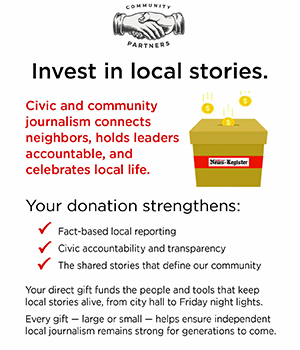Stapilus: Never say never anymore on sales tax, self-serve gas
Guest writer Randy Stapilus is a former reporter and editor who has turned to writing and publishing books from Carlton. He has devoted his career to covering politics and government in Oregon, Washington and Idaho. In addition to publishing books for himself and others through the Ridenbaugh Press, he maintains a blog at www.ridenbaugh.com. In addition, he continues to write for print and online news publications, including the Salem-based Oregon Capital Chronicle, https://oregoncapitalchronicle.com, where this piece originally appeared. He can be reached at stapilus@ridenbaugh.com.
An old joke has it that Oregonians are given the word at birth: no sales tax and no self-serve gas at the pump.
One of those rules seems to be fading. Might the other, eventually, as well?
With few exceptions, the longstanding general ban on self-service gas provokes a lot of head-shaking among non-Oregonians — and non-New Jerseyans, they being our siblings in this area. Attitudes about it seem to be changing, though, however incrementally.
The no-self-pump law was passed in 1951. It includes 17 rationales, probably anticipating skepticism to come.
Few of them seem to have had much to do with the real reasons the law was passed — including, it would appear, the prospect of more service station jobs, hope for insurance benefits and some pressure from seniors appreciating the fueling assistance. The environmental and safety arguments always did seem a little sketchy.
About 9,800 people work at Oregon gas stations, but there’s little clarity on how many might be attributable to the self-serve ban.
Attacks on the law have become persistent if sporadic over the years.
A legal case arguing the Oregon law was unconstitutional failed in 1989, as did another brought against its New Jersey counterpart. Attempts at the Legislature to change the law have kept falling short, but Oregon’s population has been split on the subject for a long time.
In 1982, gas station owners, interested in operating the way their counterparts do almost everywhere else, proposed a ballot measure to end the ban.
It drew just 42.4% of the vote. A majority of Oregonians didn’t want self-serve.
Time and generations seem to have changed this, though.
In a 2014 Public Policy Poll, Oregonians proved almost evenly divided on the subject, 44% backing a move to self-service and 46% opposing it. They weren’t so evenly divided between age groups, however.
A clear majority of those under age 45 — 53% to 33% — favored ending the self-serve ban.
That generational shift may have undergirded what’s been happening at the Statehouse the last few years.
One year after the PPP survey, the Legislature eased pumping rules in rural counties with fewer than 40,000 residents, after citizens in farther-flung communities complained gas was often unavailable during off-peak hours. The rules were relaxed a little more in 2018, serving to extend the hours self-serve was available.
When the COVID-19 pandemic hit in the spring of 2020, the rules were scaled back further, partly to address short staffs and partly to address social distancing. The rules were tightened again later, but self-serve had expanded more widely and a precedent had been set.
That brings us to Oregon’s just-ended 2022 legislative session and House Bill 4151, sponsored by House Majority Leader Julie Fahey of Eugene and Rep. Shelly Boshart Davis of Albany. It would have allowed stations to offer self-serve as long as they also provided a pumping option.
At a Feb. 18 hearing on the bill, Rep. Lew Frederick of Portland expressed concern that pumping service might fade away once stations were allowed to offer a self-serve option, and he’s probably right. That would be the logical business trend line, particularly at a time when a wide range of retail operations, including gas stations, are having a hard time recruiting and retaining staff.
That end point might be held off if the requirement that service also be provided on request remained in the law. However, Frederick’s observation underscored the shifting nature of the whole thing: Social and economic conditions change, and when they do, the law often gets dragged along with them.
In the end, the bill got snagged in the legislative process. It didn’t make the final cut for action this session.
Watch for its return next year, though.
And, oh, by the way, there’ve also been growing rumblings about the other Oregon standby — taxless sales. A bill was proposed in this year’s session, House Bill 4079, to establish a 3% sales tax on certain “luxury items.”
The bill was swatted down quickly. That’s in line with Oregon history, in which anything resembling a sales tax has been killed off by either the voters or the Legislature, maybe most impressively by the voters in the 1980s.
Not many years ago, then-Sen. Mark Hass declared, “Oregon will never have a sales tax.” There’ve been a few jags in that trend line, though.
On a 2018 ballot measure, 57.3% of voters supported the ability of local governments to tax grocery sales, which would logically be among the more difficult sells. That looks like an indicator of a new trend line.
Watch what happens at the gas pump and you may see some clues about where the sales tax might be going on down the road.











Comments